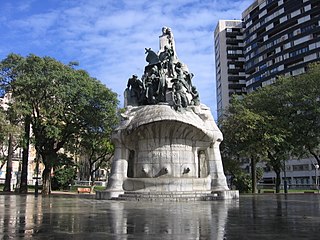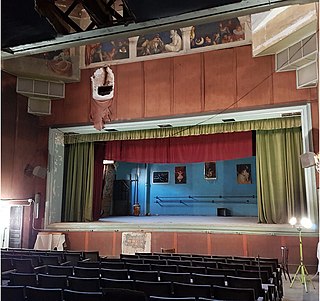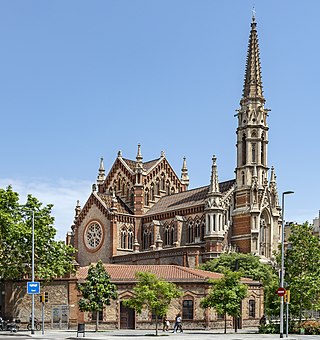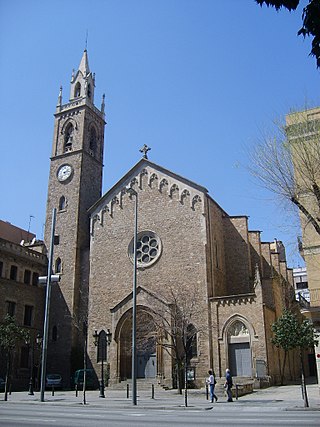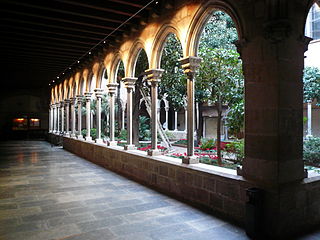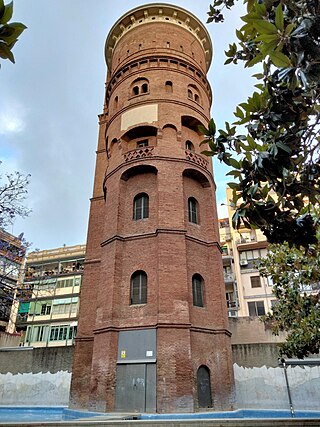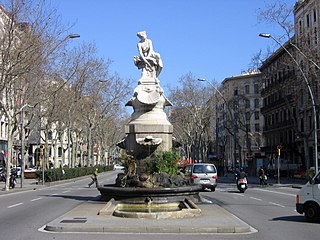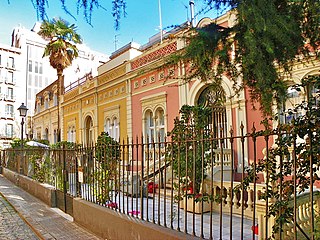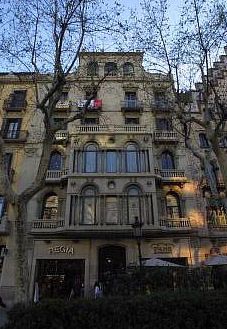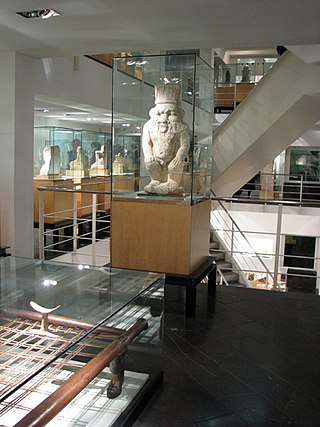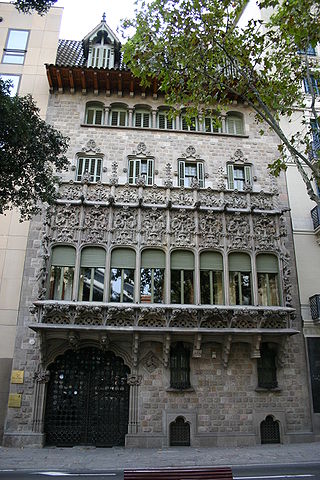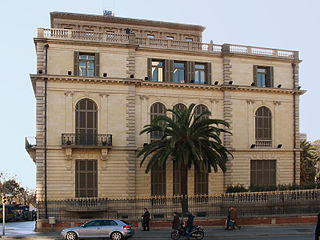Self-guided Sightseeing Tour #6 in Barcelona, Spain
Legend
Guided Free Walking Tours
Book free guided walking tours in Barcelona.
Guided Sightseeing Tours
Book guided sightseeing tours and activities in Barcelona.
Tour Facts
4.1 km
56 m
Experience Barcelona in Spain in a whole new way with our free self-guided sightseeing tour. This site not only offers you practical information and insider tips, but also a rich variety of activities and sights you shouldn't miss. Whether you love art and culture, want to explore historical sites or simply want to experience the vibrant atmosphere of a lively city - you'll find everything you need for your personal adventure here.
Activities in BarcelonaIndividual Sights in BarcelonaSight 1: Monument a Bartomeu Robert
The Monument to Doctor Robert is a sculptural ensemble today inside the Plaça de Tetuan in Barcelona, in the Eixample district. It is dedicated to Bartomeu Robert, a Catalanist doctor and politician, mayor of Barcelona between March and October 1899. The monument is considered a cultural asset of local interest (BCIL) in the Inventory of Catalan Cultural Heritage with the code 08019/1598.
Sight 2: Taller Masriera
The Masriera Workshop is a building located at Carrer de Bailèn, 70-72, on the Dreta de l'Eixample in Barcelona, listed as a Cultural Asset of Local Interest.
Sight 3: Sant Francesc de Sales
The church and convent of Les Saleses is a complex formed by the church and the old convent of the Saleses nuns of the Order of the Visitation, located on the Paseo de San Juan in Barcelona, between the streets of Valencia and Aragón. It was designed by Joan Martorell i Montells. Work on the convent began in 1877 and the church was built between 1882 and 1885, corresponding to the current parish of Sant Francesc de Sales. The old convent was converted in 1943 into a school of the Marist Brothers. It is a work protected as a cultural asset of local interest.
Sight 4: Església Parroquial de la Concepció
The Basilica of the Immaculate Conception and Assumption of Our Lady is a basilica in Barcelona, Catalonia. The church originated as the Jonqueres Monastery, that was moved stone by stone when the land of the monastery was to be demolished. In 1879, a bell tower was added from the church of San Miguel which was also going to be demolished. The rectory stands on the left side of the bell tower and is a historicist building built at the end of the 19th century. On 20 February 2009, Pope Benedict XVI granted the title of minor basilica to the church, which became the eighth basilica in the city.
Wikipedia: Basilica of the Immaculate Conception (Barcelona) (EN)
Sight 5: Claustre de l'església de la Concepció
Santa Maria de Jonqueres was a monastery of nuns in the city of Barcelona that was on Jonqueres Street from the thirteenth to the nineteenth century, when the church and the cloister were transferred stone to stone in Aragon Street and today in Day is part of the Parish Church of the Conception in the Eixample district.
Sight 6: Torre de les Aigües de l'Eixample
The Torre de les Aigües is a construction listed as a Cultural Asset of Local Interest, located in the courtyard of the block of houses bounded by the streets of Roger de Llúria, Consell de Cent, Bruc and Diputació. Access is through an open passage at Carrer de Roger de Llúria, 56.
Sight 7: Font de Diana
The Fountain of Diana is a sculptural monument located at the intersection of Gran Via de les Corts Catalanes and Carrer de Roger de Llúria, in the Eixample district of Barcelona. Created in 1898 and installed in its location in 1919, it was the work of the sculptor Venanci Vallmitjana i Barbany. This is a work registered as a Cultural Asset of Local Interest (BCIL) in the Inventory of Catalan Cultural Heritage with the code 08019/1446.
Sight 8: Passatge de Permanyer
Passatge de Permanyer is an alley that crosses the block of houses framed by Roger de Llúria, Pau Claris, Diputació and Consell de Cent streets, in the Eixample district of Barcelona. The passage, which honours the memory of Francesc Permanyer i Tuyets, is made up of a set of English-style huts. It was designed in a unitary way by Jeroni Granell i Barrera in 1864. The houses consist of a semi-basement and a raised ground floor, with a small garden in front. Conceived in an eclectic style, they incorporate classical elements and others of an Arabizing nature. The houses at the ends, in the same style, have one more floor, of the mansard type. This complex is included in the Barcelona City Council's catalogue of cultural assets of local interest. It is a work protected as a Cultural Asset of Local Interest.
Sight 9: Museu del Perfum
The Perfume Museum of Barcelona, officially known in Catalan as Museu del Perfum, was founded in 1961 to exhibit an evolution of perfume vessels throughout the ages.
Sight 10: Museu Tàpies
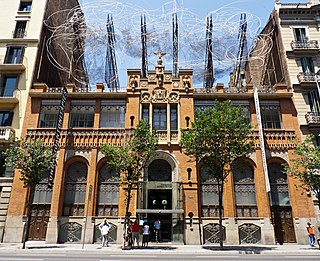
The Tàpies Museum is a museum and cultural centre located in the former headquarters of the Montaner i Simon publishing house, at Carrer d'Aragó, 255 in Barcelona. It is mainly dedicated to the life and work of the Catalan painter Antoni Tàpies (1923-2012) and was founded by the artist himself in 1984 under the name of Fundació Antoni Tàpies, with the idea of creating a centre for the study and promotion of contemporary art. It has more than 300 original works, donated by the painter himself and by Teresa Tàpies and opened its doors in June 1990. In addition to the permanent exhibitions dedicated to the Barcelona painter, the museum holds numerous temporary exhibitions that cover all artistic genres. It also has a club of friends of the foundation, the Friends of the Antoni Tàpies Foundation.
Sight 11: Museu Egipci
The Egyptian Museum of Barcelona, located at Carrer de València, 284, belongs to the Clos Archaeological Foundation, a non-profit organisation founded in 1992 by the businessman Jordi Clos i Llombart. Its objective is the promotion and dissemination of art in general and archaeology, especially of ancient Egypt.
Sight 12: Baron of Quadras Palace
The Palau Baró de Quadras is a small modernista palace located in Barcelona on Avinguda Diagonal, equidistant from La Pedrera and Casa de les Punxes. It was built by the Catalan architect Josep Puig i Cadafalch between 1904 and 1906. In 1976 it was designated as Nacional National Historical Monument of Artistic Interest. Currently houses the main offices of the Institut Ramon Llull.
Sight 13: Palau Robert
Palau Robert is a building on Barcelona's Passeig de Gràcia 107, the former private residence of Robert i Surís, an influential aristocrat, politician and businessman at the turn of the 20th century. It's now a government-run institution that hosts an exhibition centre with three halls, a concert hall and gardens as well as the Information Tourist Centre for Catalonia. In the 1936–1939 period, it was the site of the Generalitat de Catalunya's Ministry of Culture. After the Spanish Civil War, Robert's family regained the Palau, until its second purchase by the Generalitat de Catalunya in 1981, when it became a public building.
Share
Disclaimer Please be aware of your surroundings and do not enter private property. We are not liable for any damages that occur during the tours.
GPX-Download For navigation apps and GPS devices you can download the tour as a GPX file.
